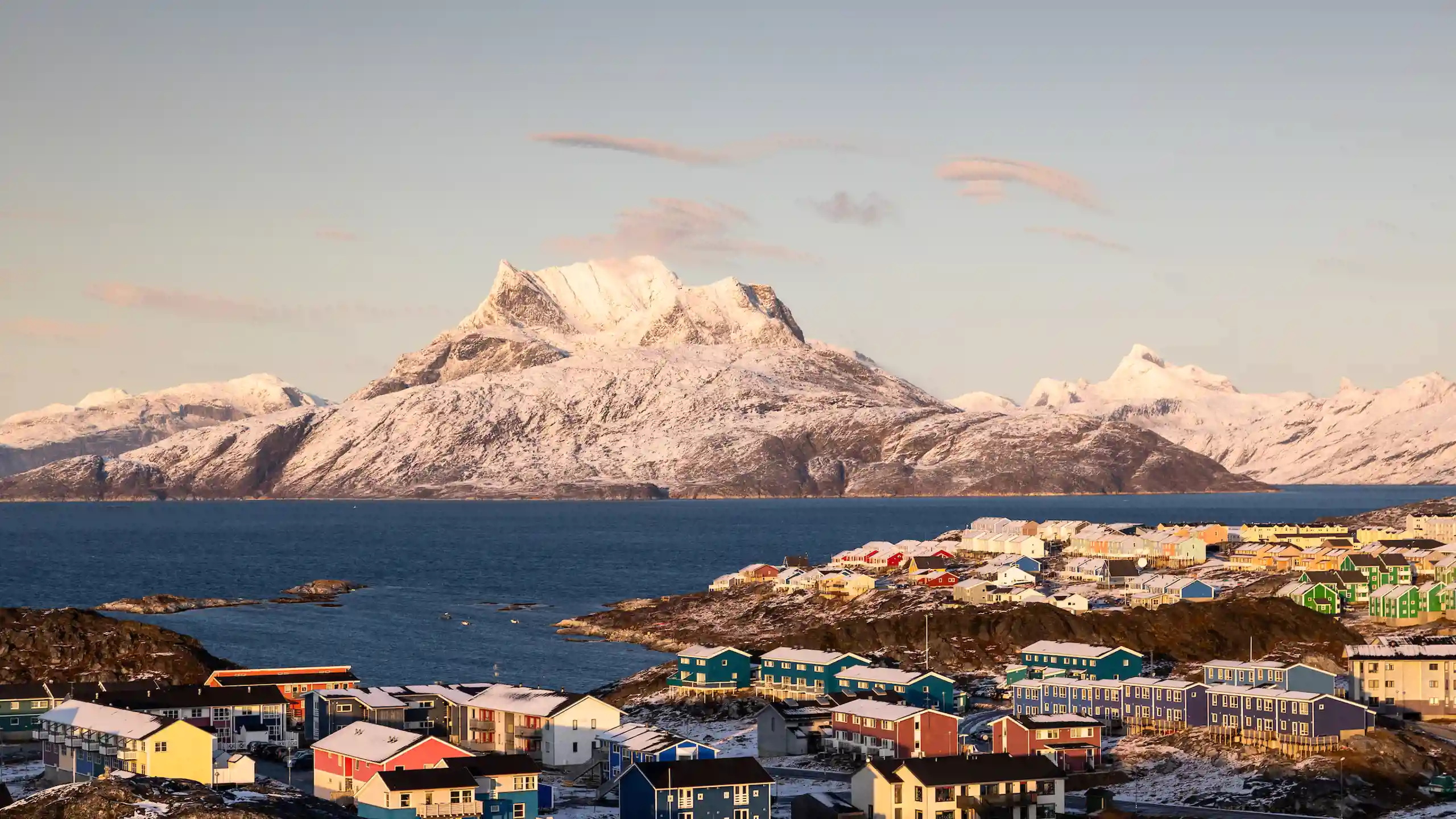
Nuuk
Experience Greenlands capital Nuuk. A big city that can't be compared to any other. Here is a vibrant city life that is surrounded by the most beautiful nature.
English
Traffic deviations
Read more
The next draw for a travel gift card of DKK 3,000 is January 31st 2025
Det kan tage op til 30 sekunder for oprettelsen....
You must now log in to the portal, with your new user, by clicking on login in the right corner.
You will receive a code in your email, which you can use to change your password.
We can not find this email in the system
You will receive a code in your email, which you can use to change your password.
Eight signs, a letter and a number
- a small letter
- a capital letter
- a number
- a symbol
An unexpected error has occurred
Your password has now changed!
Flight number
Dato
Airline
Travel time
Departure
Departure
Arrival
Arrival
Your reservation number is six characters long and can contain both numbers and letters
Feel free to fill in the blank
Reservation does not exist
An unexpected error has occurred
Your reservation has been added
They came from the north and they came from the south. A past that stretches back 4,500 years leaves traces that continue to live today in culture, sagas, legends and people.

Photo Aningaaq R. Carlsen
The first Greenlanders came from a long way away when they arrived in Greenland some 4,500 years ago. Originally they were a nomadic people who moved around as the opportunities for hunting developed from Mongolia to Alaska, then onwards across Canada to Greenland via Nares Strait. How long they maintained this lineage is a question to which we don’t fully know the answer. However, it’s certain that Greenland was uninhabited for several periods until 900-1000 AD. Today’s Greenlandic population probably stems from the latest wave of immigration in around the year 1000.
In parallel with the final immigration from the west, the Norse settlers, led by Icelander Erik the Red, reached South Greenland. He had been expelled from his home country and spent his time on the sea until 982, when he discovered the lush country he named Greenland. Countless vessels sailed to the coast over the next few years and discharged Icelanders who began settling at the base of the long fjords. At these points there were – and still are – fertile plains for as far as the eye could see.

Photo Aningaaq R. Carlsen
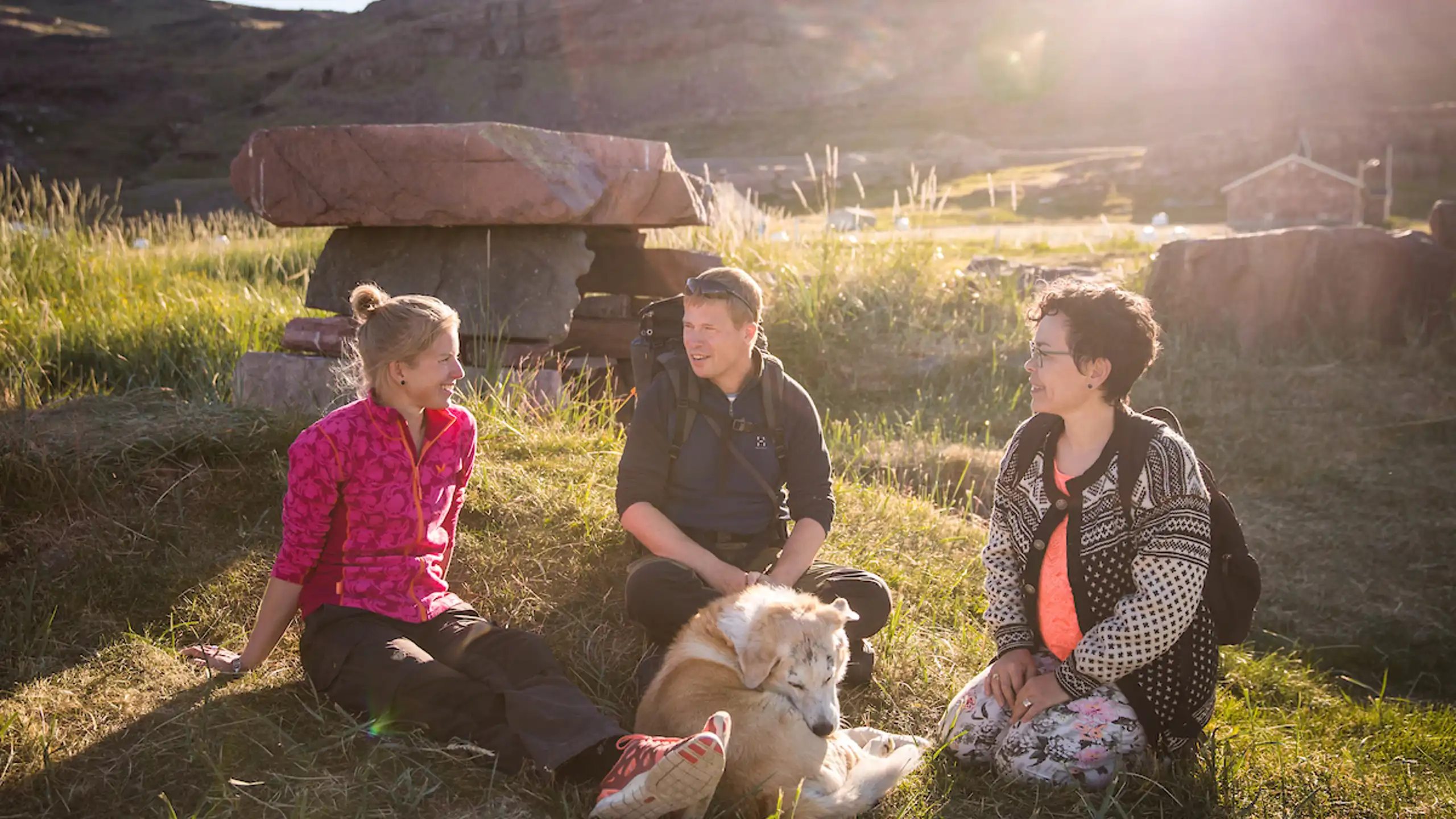
Foto Mads Pihl
The Norse settlers left farms, stables and churches. Just 20 minutes by boat from Narsarsuaq is a reconstruction of Erik the Red’s farm and Tjodhilde’s church – the first Christian church on the American continent. Throughout South Greenland the ruins bear witness to the golden age of the Norse settlers. When this community was at its height, 6,000 people lived here. The well-preserved Hvalsey Church ruin from the 14th century and the Episcopal residence of Gardar are also well worth a visit.
You need never go far before you encounter Greenland’s past, with ruins of houses, graves, fox traps and settlements, such as Sermermiut valley just outside Ilulissat. All towns have a museum that provides excellent insight into the past at each particular venue and a collection of tools made from stone and bone, amulets and clothes. In Nuuk a visit to the National Museum is a must. Here you’ll find a collection of well-preserved mummies from around 1475.
In the bigger towns a walk with a guide explaining the cultural history of the region is a good idea, and more recent history is worth exploring, e.g. in Ilulissat, where you can see the birthplace of Knud Rasmussen, the ‘board’ and the Zion church. Bring the past up to date and digest these impressions with a cup of coffee in one of the town’s cafés.
Greenland is full of surprises, beautiful landscapes and magnificent experiences. Find your next dream destination below

Nuuk
Experience Greenlands capital Nuuk. A big city that can't be compared to any other. Here is a vibrant city life that is surrounded by the most beautiful nature.
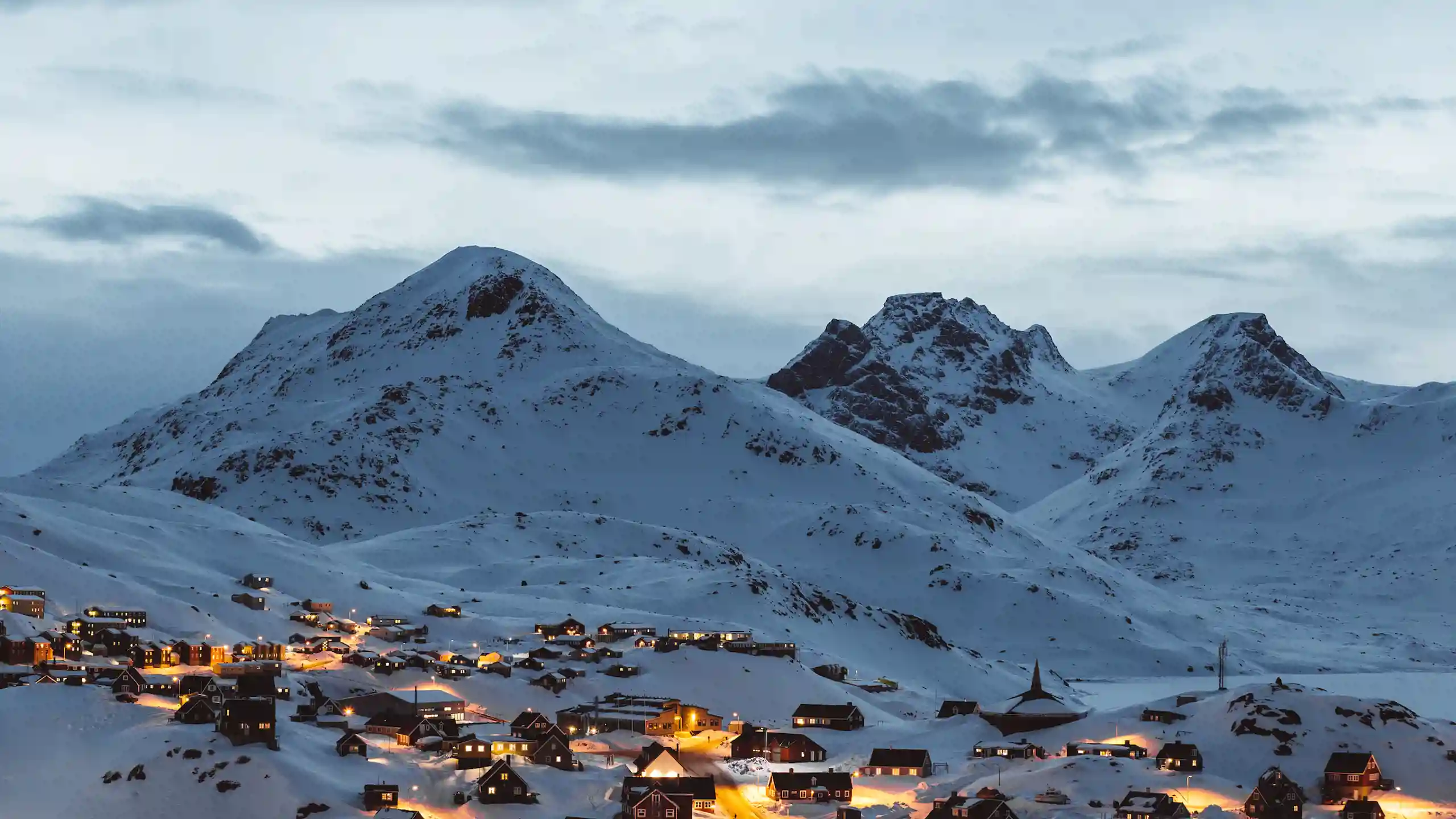
Tasiilaq
Tasiilaq is situated on the slope of a fell on the banks of Kong Oscar Fjord surrounded by steep, snow-covered peaks. The town is well worth a visit for this reason alone.
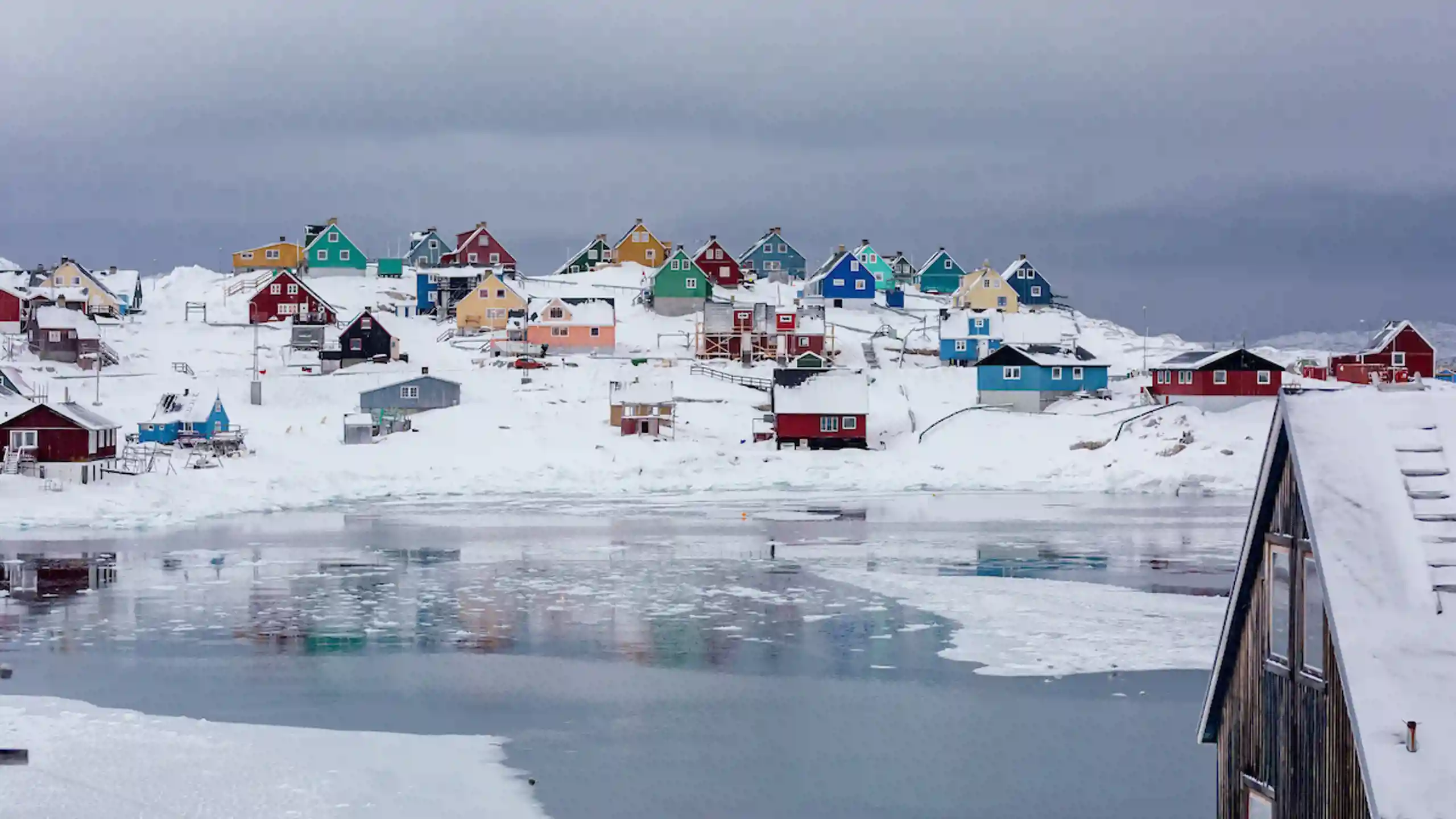
Aasiaat
Can we tempt you with an archipelago holiday in the "Land of a Thousand Islands"? Then Aasiaat is a good starting point with its position in the southern part of Disko Bay.

Ilulissat
Standing by the fjord and watching the icebergs sail majestically past lifts life up in the first division. Ilulissat's Icefjord is with good reason included on the UNESCO World Heritage List. Ilulissat, also called Jakobshavn, is Greenland's third-largest city, and in this paradise of icebergs, breathtaking experiences await you that you will soon forget.
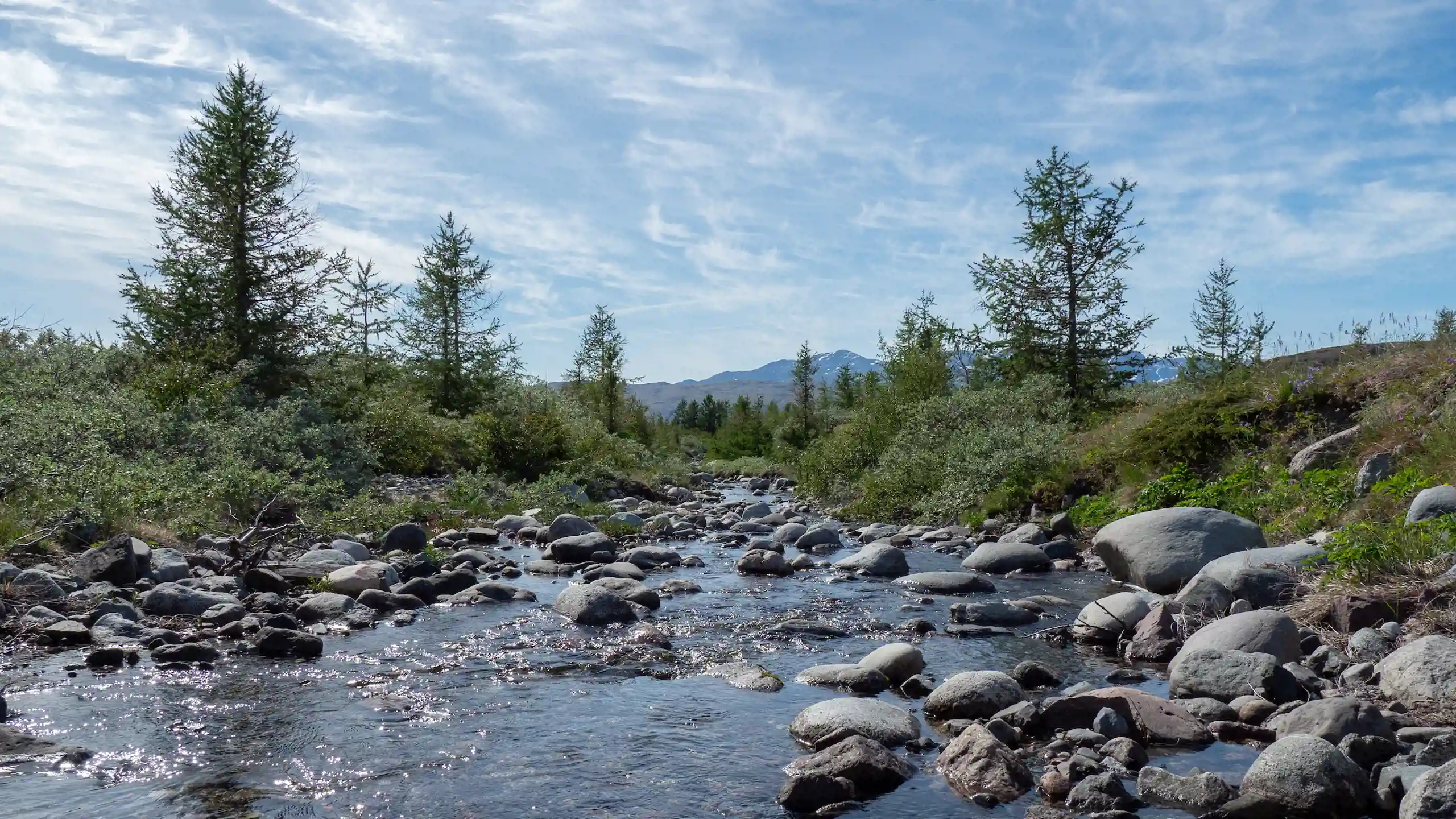
Narsarsuaq
At a distance of just nine kilometres from the airport you’ll find the Ice Sheet. Go on a trip to the thunderous mass of ice or experience life as a Norse settler at Erik the Red’s longhouse.
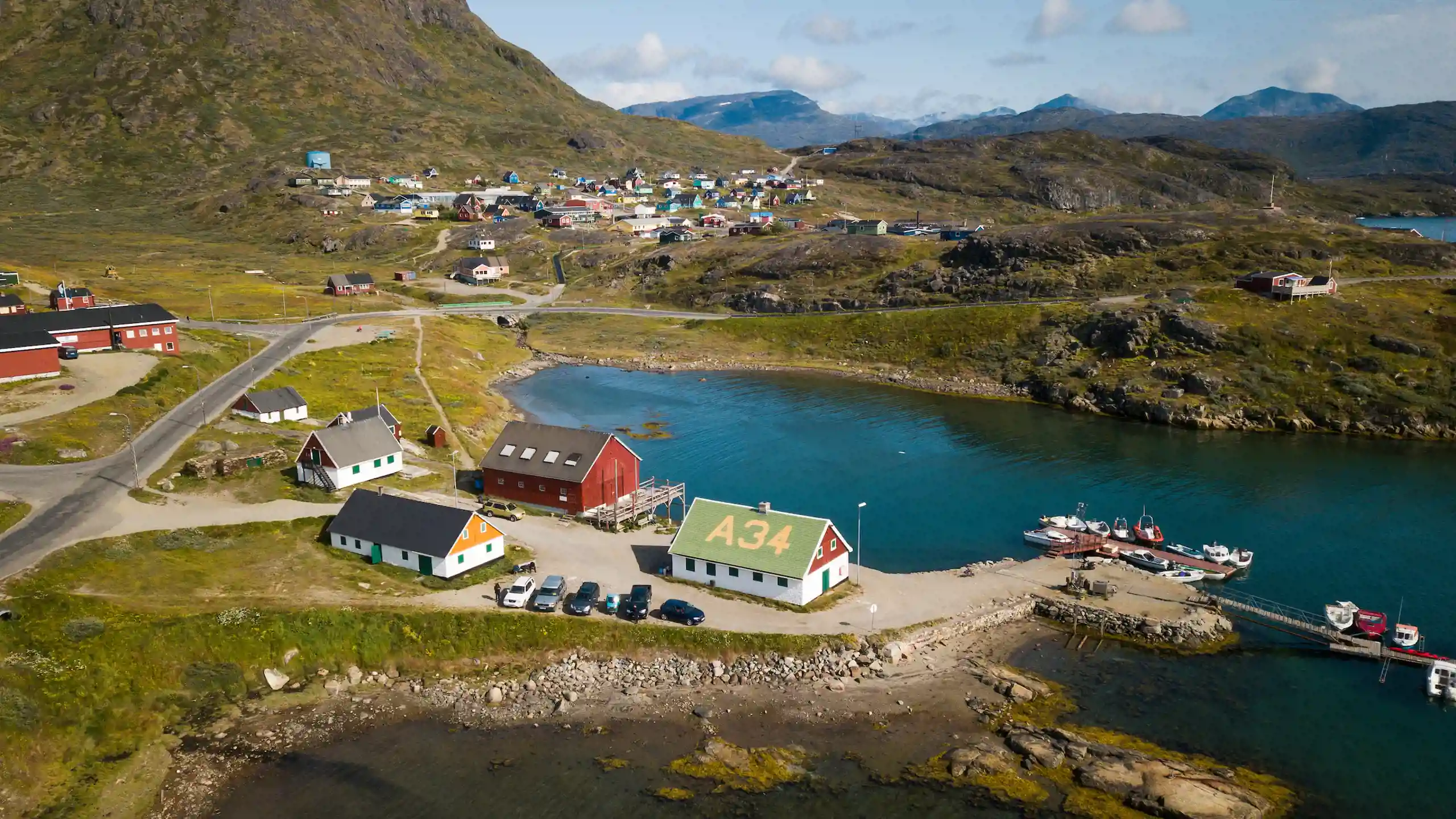
Narsaq
At the foot of the mountain Qaqqarsuaq lies Narsaq, a new town on a green plain, which is a good starting point for a tour of South Greenland.

Qaqortoq
The main town in South Greenland, the home to young students and tagged “one of Greenland’s most charming and attractive towns”.
Welcome to the experiences of the other world. Where else can you find snow, ice, mountains, sea and whales close to green plains with potato fields? Go exploring for new exciting experiences right here.